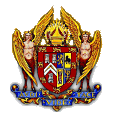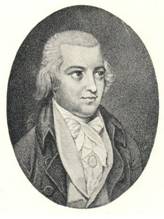
| | HOME | |
|
|
|
| SOME DISTINGUISHED CHARACTERS
AND INTERESTING PLACES Dr TIPPING BROWN
Tipping Brown, MD played a very prominent part in the affairs of freemasonry and many other aspects of life in the old Port of Sunderland. Dr. Brown became master of Lodge No 207 (later Phoenix Lodge) in the latter part of 1781 after the resignation of Captain Thompson who had served the lodge as master for 7 good years. However, in November 1783 the Hall which had been built by Captain Thompson in Vine Street in 1778, somehow took fire and the hall was entirely destroyed – the lodge at this time being called King George’s Lodge ( Garbutt 1819). A subscription was entered into, land was purchased and on 5th August 1784 the first stone was laid by Tipping Brown for the aptly named Phoenix Lodge Hall. For the dedication of the Hall, on 5th April 1785 Dr Brown wrote an ode that was sung by the full Durham Cathedral choir and many others. Below we set out the last verse of the ode; The sun he fix’d, the central soul, ***** With Michael Scarth he aimed to improve relations between the two Sunderland Lodges and because of his genial nature, his great knowledge of freemasonry and his many social attributes he, surely, must have had a very beneficial influence on the younger man. We have previously mentioned that Scarth was third partner in the construction of the IRON BRIDGE and here again we see the hand of the good doctor in the tribute he wrote, in Latin, to Rowland Burdon which was inscribed on the plate set in the bridge foundation stone. Foundation stone inscribed and read in Latin by the
Senior
This Society did excellent work until it was merged into the newly formed Sunderland Dispensary in 1794 when Dr Brown was appointed as one of two Physicians together with four Surgeons and a House–Apothecary. The first Sunderland Hospital. In 1795 the Sunderland Subscription Library was officially formed with Dr Tipping Brown as its President. Rowland Burdon and Ralph Milbanke, M P s representing the County of Durham, were chosen as Patrons.
|
Approved by the United Grand Lodge of England | Legal Notice

